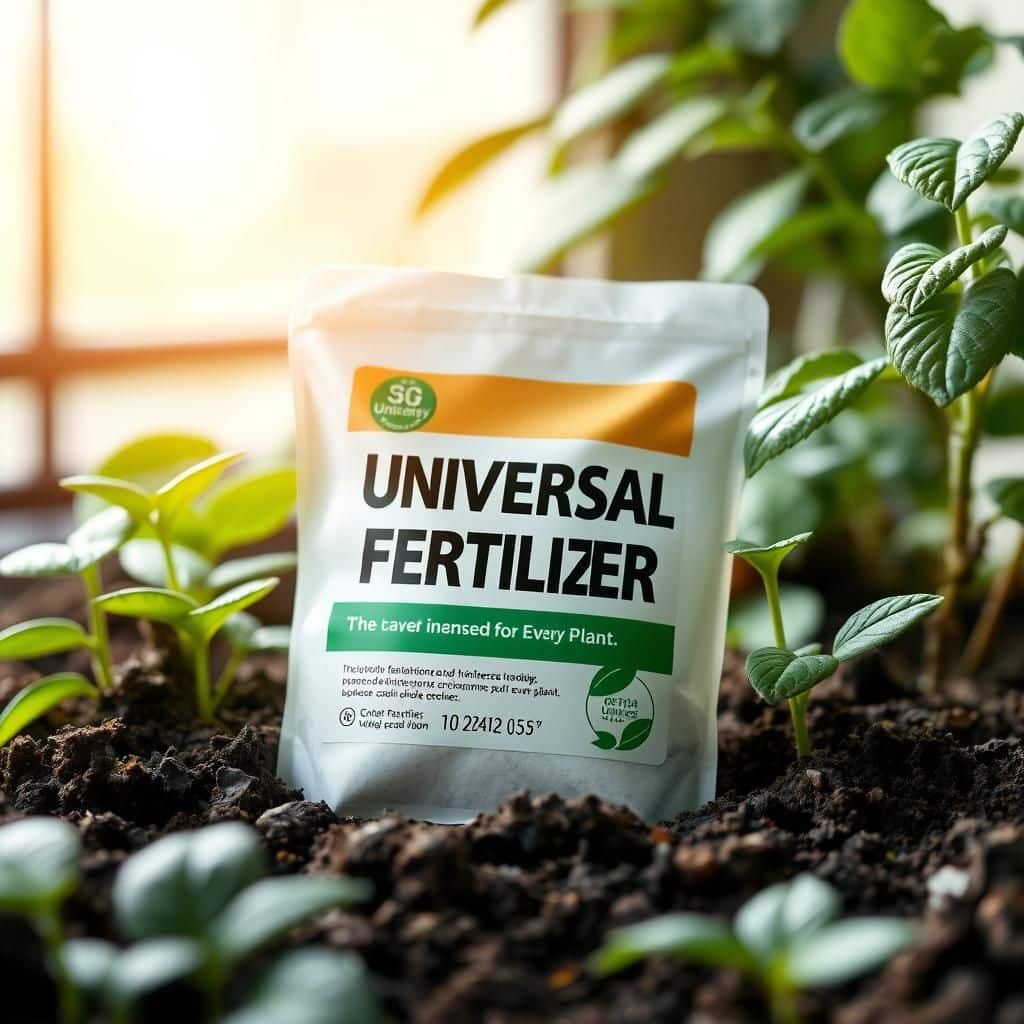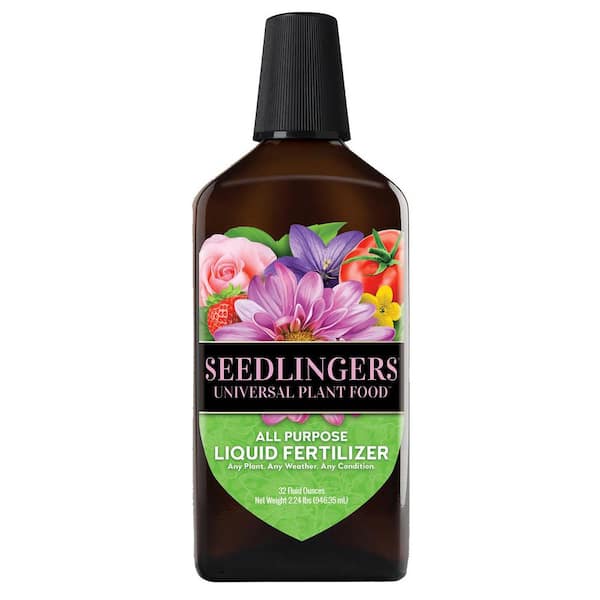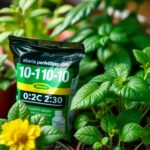What is a Universal Fertilizer? Discover Its Benefits and Usage for Every Plant

Universal fertilizers have emerged as a vital solution for gardeners and farmers seeking efficient ways to nourish a diverse array of plants. These versatile products are formulated to provide essential nutrients needed for healthy growth, catering to a wide range of plant species. Understanding what constitutes a universal fertilizer, along with its benefits and proper usage, can significantly enhance the vitality of your garden. This article will explore the advantages of universal fertilizers and how they can simplify plant care, ensuring that each plant receives the nourishment it needs to thrive, regardless of its specific requirements.
What is a Universal Fertilizer?
Universal fertilizers are nutrient-rich substances designed to provide essential nutrients to a wide variety of plants, making them suitable for diverse gardening and agricultural applications. These fertilizers typically contain a balanced mixture of macronutrients—such as nitrogen, phosphorus, and potassium (N-P-K)—along with secondary nutrients and micronutrients necessary for plant growth. The formulation of universal fertilizers allows them to support the development of plants in various stages, from seedling to maturity, thereby promoting healthy growth, enhanced yields, and improved resistance to pests and diseases across multiple plant types.
Composition of Universal Fertilizers
The composition of universal fertilizers generally includes macronutrients like nitrogen (N), which promotes leaf and stem growth; phosphorus (P), which aids in root development and flowering; and potassium (K), which enhances overall plant health and resistance to stress. In addition to these primary nutrients, universal fertilizers also incorporate secondary nutrients such as calcium, magnesium, and sulfur, as well as various micronutrients like iron, manganese, and zinc, which are vital for the biochemical processes within the plant.
Types of Universal Fertilizers
Universal fertilizers come in various forms, including granular, liquid, and slow-release options. Granular fertilizers are solid particles that can be applied directly to the soil and provide gradual nutrient release. Liquid fertilizers are water-soluble and can be easily mixed with water for foliar application, which allows for quick absorption by plants. Slow-release fertilizers release nutrients over an extended period, reducing the frequency of application and potential nutrient leaching, making them ideal for long-term planting needs.
Benefits of Using Universal Fertilizers
The benefits of using universal fertilizers include improved plant growth, increased crop yields, and enhanced soil fertility. By supplying all necessary nutrients in a single application, gardeners and farmers save time and effort compared to using multiple specialized fertilizers. Moreover, these fertilizers often help to maintain the pH balance of the soil, promote microbial activity, and enhance overall soil structure, thereby creating a healthier growing environment for plants.
Application Methods for Universal Fertilizers
Universal fertilizers can be applied through several methods, including broadcasting, banding, and fertigation. Broadcasting involves scattering the fertilizer evenly across the soil surface before planting or during the growing season. Banding places the fertilizer in a concentrated strip near plant roots, ensuring quicker access to nutrients as plants grow. Fertigation is the application of fertilizers through irrigation systems, enabling precise nutrient delivery and efficient usage while minimizing waste and potential environmental impact.
Environmental Considerations
When using universal fertilizers, it is crucial to consider their potential environmental impact. Over-application can lead to nutrient runoff, causing water pollution and contributing to problems like eutrophication. To mitigate these issues, it is advisable to follow recommended application rates, use soil tests to analyze nutrient needs, and incorporate best management practices. This approach ensures the effective use of universal fertilizers while safeguarding ecosystems and maintaining the health of soil and water resources.
| Type | Form | Release Rate |
|---|---|---|
| Granular | Solid | Gradual |
| Liquid | Water-soluble | Immediate |
| Slow-release | Granular | Extended |
What is a good universal fertilizer?

A good universal fertilizer is a balanced nutrient solution that provides essential elements necessary for plant growth. Universal fertilizers are designed to be effective for a wide variety of plants, making them suitable for gardens, lawns, and houseplants. Commonly, these fertilizers contain a balanced ratio of macronutrients such as nitrogen, phosphorus, and potassium (N-P-K), along with micronutrients that enhance plant health. Selecting a high-quality universal fertilizer can significantly boost your plants' productivity and vitality.
Why Use Universal Fertilizer?
Using a universal fertilizer offers several advantages for both novice and experienced gardeners. It simplifies the fertilization process and ensures that a wide range of plants receive the necessary nutrients.
- Convenience: With universal fertilizers, gardeners do not need to know the specific nutrient needs of each plant.
- Cost-effective: Purchasing one versatile product can save money compared to multiple specialized fertilizers.
- Time-efficient: Application is easier and quicker when using a single fertilizer for all plants.
Key Components of Universal Fertilizers
Universal fertilizers typically contain a balance of essential macronutrients and micronutrients that promote healthy plant growth. The main components are crucial for various plant functions.
- Nitrogen (N): Promotes leaf and stem growth, is essential for the production of chlorophyll.
- Phosphorus (P): Vital for root development and flowering, it enhances energy transfer and storage in plants.
- Potassium (K): Improves overall plant health, enhances disease resistance and water regulation.
Types of Universal Fertilizers
There are several types of universal fertilizers available, each catering to different needs depending on application methods and plant types.
- Granular: Slow-release fertilizers that gradually provide nutrients over time, suitable for general use in gardens.
- Liquid: Fast-acting fertilizers that can be easily absorbed by plants through the roots and leaves.
- Organic: Made from natural sources, these fertilizers can improve soil structure and are environmentally friendly.
Application Tips for Universal Fertilizers
Applying universal fertilizer correctly can enhance its effectiveness and ensure your plants thrive. Consider the following application tips.
- Read the instructions: Always follow the recommended dosage for your specific plants to avoid nutrient burn.
- Timing: Apply fertilizers during the growing season for optimal absorption and benefits.
- Water after application: This helps to dissolve the fertilizer and allows the nutrients to penetrate the soil.
Top Universal Fertilizer Brands
Numerous brands manufacture reliable and effective universal fertilizers, each with varying nutrient compositions and formulations.
- Miracle-Gro: Known for its soluble fertilizers that produce rapid results in a wide range of plants.
- Osmocote: A popular choice for its slow-release formula that provides nutrients over an extended period.
- Jobe's: Offers organic options that cater to environmentally conscious gardeners while ensuring plant health.
What is one reason not to use Miracle-Gro?

One significant reason not to use Miracle-Gro is its high sodium content. While Miracle-Gro is a popular brand of fertilizer due to its ease of use and ability to quickly promote plant growth, its sodium levels can lead to negative consequences for both soil health and plant vitality.
See also:
Risk of Soil Salinity
The high sodium content in Miracle-Gro can contribute to soil salinity, which can adversely affect plant health. Over time, excessive salt accumulation in the soil can:
- Reduce water availability, making it difficult for plants to absorb moisture.
- Inhibit nutrient uptake, leading to deficiencies in essential elements necessary for growth.
- Damage soil structure, causing compaction and limiting root development.
Environmental Concerns
Using Miracle-Gro can raise environmental concerns, particularly with respect to water quality. The runoff from treated areas can lead to:
- Eutrophication, which can cause algal blooms in nearby water bodies.
- Contamination of groundwater, posing risks to ecosystems and drinking water supplies.
- Disruption of local flora and fauna, through the introduction of synthetic chemicals into natural habitats.
Dependency on Synthetic Fertilizers
Relying on Miracle-Gro may create a dependency on synthetic fertilizers, which can be detrimental in the long run. The implications include:
- Decreased soil fertility, as natural soil organisms are often harmed by chemical inputs.
- Increased fertilization costs, as plants become less able to thrive without synthetic aid.
- Loss of biodiversity, particularly among beneficial insects and microbes crucial for a healthy ecosystem.
Potential Plant Damage
While Miracle-Gro can promote rapid growth, it can also lead to plant damage when misused or over-applied. This includes:
- Burning of plant roots, caused by concentrated chemical exposure.
- Stunted growth, resulting from nutrient imbalances due to excessive fertilization.
- Increased susceptibility to disease, as plants under stress may not be able to fend off pathogens efficiently.
Impact on Beneficial Microorganisms
Miracle-Gro can adversely affect the population of beneficial microorganisms in the soil. Consequences of this include:
- Reduction in soil microbial diversity, which is vital for maintaining healthy soil ecosystems.
- Impaired organic matter decomposition, essential for nutrient recycling within the soil.
- Alteration of pH levels, disrupting the homeostasis of the soil environment necessary for plant health.
What is poor man's fertilizer?
Poor man's fertilizer, often referred to as compost, is a simple, cost-effective way to enrich the soil without the need for commercial fertilizers. This term typically refers to organic materials that can be used to enhance nutrient levels in the soil for gardening or farming. The main idea behind poor man's fertilizer is to recycle waste materials, such as kitchen scraps and yard waste, turning them into a rich soil amendment that boosts plant growth.
Using poor man's fertilizer promotes sustainability, reduces waste, and improves soil health. By composting materials that would otherwise end up in landfills, gardeners can provide essential nutrients to their plants without relying on synthetic inputs. The nutrients available in compost come from various sources, including nitrogen, phosphorus, and potassium, which are vital for plant growth.
What Materials Can Be Used for Poor Man's Fertilizer?
The effectiveness of poor man's fertilizer largely depends on the materials used in the composting process. Common materials include:
- Kitchen scraps: Vegetable peels, fruit waste, coffee grounds, and egg shells.
- Yard waste: Grass clippings, leaves, and small branches.
- Others: Cardboard, paper, and yard trimmings that break down easily.
Selecting the right balance of greens (nitrogen-rich materials) and browns (carbon-rich materials) is essential for creating effective compost.
Benefits of Using Poor Man's Fertilizer
Using poor man's fertilizer offers numerous benefits to both the soil and the environment. These include:
- Nutrient-rich soil: Provides essential nutrients that improve plant growth and health.
- Soil structure improvement: Enhances aeration and retention of moisture.
- Waste reduction: Minimizes the amount of waste sent to landfills by recycling organic materials.
Utilizing compost can lead to healthier plants and better crop yields while promoting eco-friendly gardening practices.
How to Make Poor Man's Fertilizer
Creating poor man's fertilizer at home requires a few simple steps to ensure the best results. The process consists of:
- Gather materials: Collect a mix of green (nitrogen) and brown (carbon) materials in a compost bin or pile.
- Maintain moisture: Keep materials damp but not soggy, ensuring microorganisms can thrive.
- Turn the compost: Aerate the pile regularly to promote decomposition and evenly distribute nutrients.
These steps help accelerate the composting process, transforming organic waste into high-quality fertilizer.
Common Misconceptions about Poor Man's Fertilizer
There are several misconceptions surrounding the use of poor man's fertilizer that can hinder its effectiveness. These include:
- It smells bad: Properly maintained compost should not produce foul odors; any smell typically indicates imbalances in the materials.
- It takes too long to make: With the right conditions, compost can be created within a few weeks to months, especially if the process is actively managed.
- It's not effective for all plants: While some plants may have specific fertilizer needs, most can benefit significantly from nutrient-rich compost.
Clearing up these misconceptions can encourage more gardeners to embrace composting as a valuable resource for their gardens.
See also:
Using Poor Man's Fertilizer in Different Types of Gardening
Poor man's fertilizer can be successfully integrated into various gardening practices. These applications include:
- Vegetable gardens: Enhances nutrient availability for fast-growing and heavy-feeding vegetables.
- Flower gardens: Promotes flowering and vibrant colors through improved soil health.
- Container gardening: Helps to enrich potting mixes, allowing container plants to thrive.
Applying compost across different gardening types not only improves plant health but also contributes to sustainable gardening habits.
Is there a fertilizer that works for all plants?

While it may be tempting to find a universal fertilizer suitable for every type of plant, the reality is more complex. Different plants have unique nutritional needs based on their species, growing conditions, and stage of development. Consequently, a single fertilizer formulated to meet the diverse requirements of all plants is highly unlikely. However, some fertilizers aim to cater to a wider range of plants by providing a balanced nutrient profile, but results may vary.
Understanding Plant Nutritional Needs
Plants require various nutrients, categorized into macronutrients and micronutrients. Each species has its own optimal ratios for these nutrients, which include:
- Nitrogen - Essential for leaf and stem growth.
- Phosphorus - Crucial for root development and flowering.
- Potassium - Important for overall plant health and disease resistance.
Some plants may thrive on different nutrient compositions, making it vital to understand individual plant requirements before selecting a fertilizer.
Types of Fertilizers
Fertilizers can generally be classified into three broad categories: organic, synthetic, and slow-release. Here's a breakdown:
- Organic Fertilizers - Made from natural materials like compost, manure, or bone meal.
- Synthetic Fertilizers - Chemically manufactured, ensuring precise nutrient ratios.
- Slow-Release Fertilizers - Provide nutrients gradually over time, suitable for various plant types.
Understanding these types can help you choose a fertilizer that may better meet the needs of different plants, though it may not be universally effective.
The Role of Soil Quality
Soil quality significantly influences nutrient availability for plants. Factors like pH level, drainage, and organic matter content play a crucial role:
- pH Level - Affects nutrient absorption; most plants prefer a pH between 6 and 7.5.
- Drainage - Well-draining soils prevent nutrient leaching and root rot.
- Organic Matter - Enhances nutrient retention and improves soil structure.
Even the best fertilizer may not work efficiently if the soil is not conducive to plant growth.
Indications for Fertilizer Use
Knowing when and how to apply fertilizer can be as important as choosing the right product. Certain indicators suggest when plants may need fertilization:
- Yellowing Leaves - Often a sign of nitrogen deficiency.
- Poor Growth - May indicate a lack of essential nutrients.
- Reduced Flowering or Fruiting - Suggests a need for phosphorus or potassium.
Recognizing these signs can help in deciding whether a more specific fertilizer is required for optimal plant health.
Testing for Nutrient Deficiencies
To determine whether a particular fertilizer is necessary, performing a soil test can provide valuable insight:
- Soil pH Testing - Helps assess nutrient availability.
- Nutrient Analysis - Identifies deficiencies in essential elements.
- Regular Monitoring - Ensures optimal growing conditions over time.
Soil testing allows for targeted fertilization, addressing the specific needs of various plants rather than relying on a one-size-fits-all approach.
Questions from Our Readers
What is a universal fertilizer?
Universal fertilizer is a type of fertilizer designed to provide a wide range of nutrients that are essential for the growth of various plants. It typically contains a balanced mix of nitrogen, phosphorus, and potassium, along with micro-nutrients that support healthy plant development, making it suitable for diverse gardening and agricultural needs.
How do I use universal fertilizer?
To use universal fertilizer effectively, it is important to follow the instructions on the packaging regarding the appropriate dosage and application frequency. Generally, it can be applied directly to the soil or mixed with water for liquid feeds, ensuring that plants receive the necessary nutrients during their growing season.
See also:
What plants benefit from universal fertilizer?
Universal fertilizer is beneficial for a variety of plants, including vegetables, flowers, and houseplants, as it provides the essential nutrients required for healthy growth and flowering. However, specific plant types may have unique nutritional needs, so it's advisable to monitor their performance and adjust the fertilizer type if necessary.
Is universal fertilizer safe for the environment?
Most universal fertilizers are formulated to be safe for the environment when used according to the manufacturer's recommendations. However, over-application can lead to nutrient runoff, affecting local waterways, so it's essential to apply it responsibly and consider using organic options for more sustainable gardening practices.

If you want to read more articles like What is a Universal Fertilizer? Discover Its Benefits and Usage for Every Plant, we recommend you check out our Fertiliser category.
Leave a Reply

Related Articles